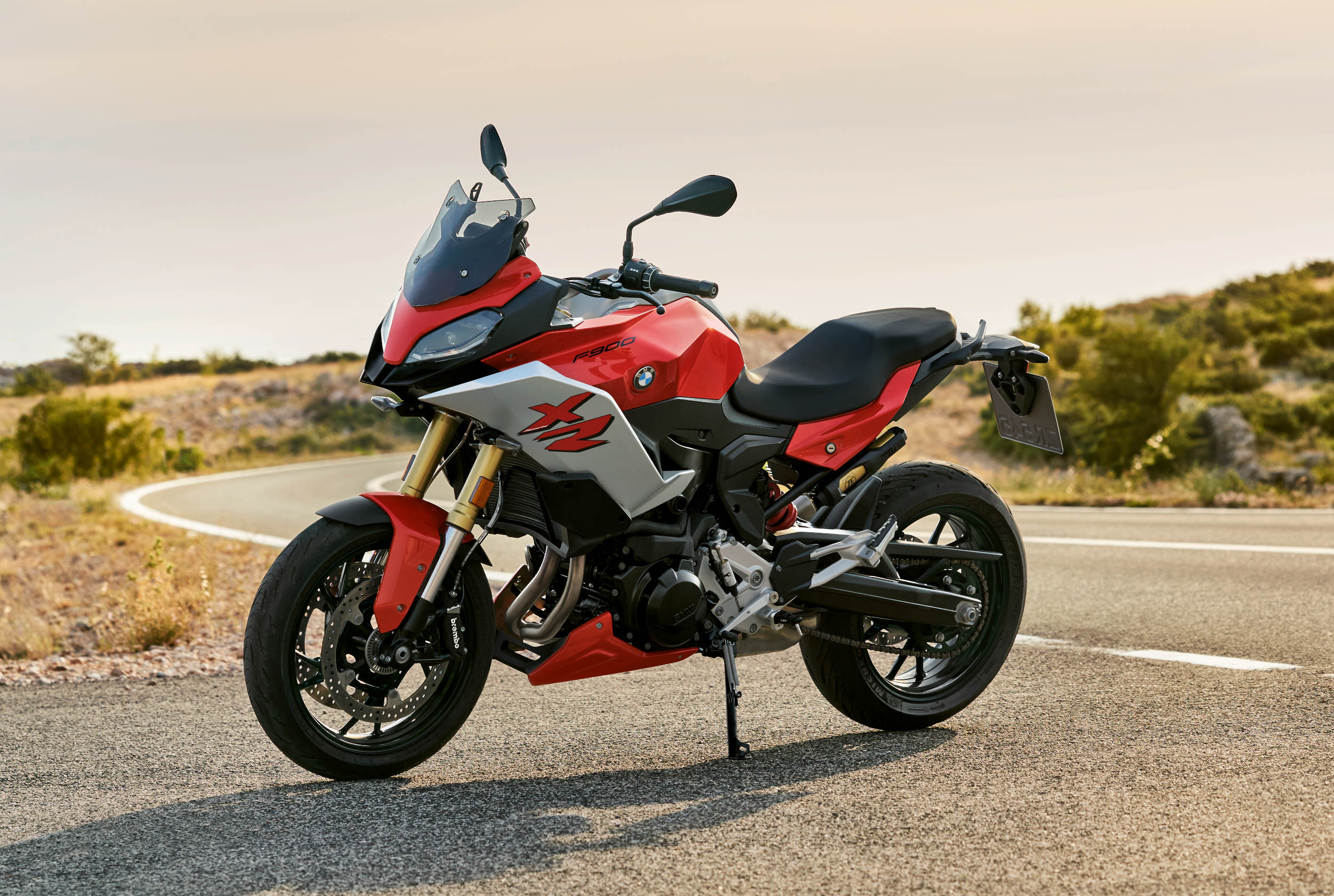
BMW has introduced a couple of new middleweight bikes … the F 900 R and F 900 XR. Both bikes feature an 895cc parallel twin engine making a claimed 105 horsepower. As you might expect from BMW, both models have the latest electronic rider assist features. Have a look at the full BMW press release below:
With the new Dynamic Roadster F 900 R and the F 900 XR in the Adventure Sport segment, BMW Motorrad is further expanding its product range for the popular mid-range. Both models offer sporty riding fun, straightforward handling and a unique range of equipment options, packaged to offer attractive value for money. Based on a powerful shared backbone, the two models differ significantly in terms of character and positioning.
The new BMW F 900 R – the Dynamic Roadster for purist riding fun.
Self-confident, sporty, active, focused on a dynamic experience – this is how fans of the BMW F 900 R could be described. The new dynamic roadster by BMW Motorrad conveys a sense of freedom and a modern lifestyle.
At the emotional level, sports-style and aggressive design meets inspiring performance in terms of engine output, torque and sound.
In addition, there are aspects such as a wide range of potential uses, a high level of suitability for everyday riding and ergonomics that make the F 900 R of equal interest to experienced sports riders and newcomers.
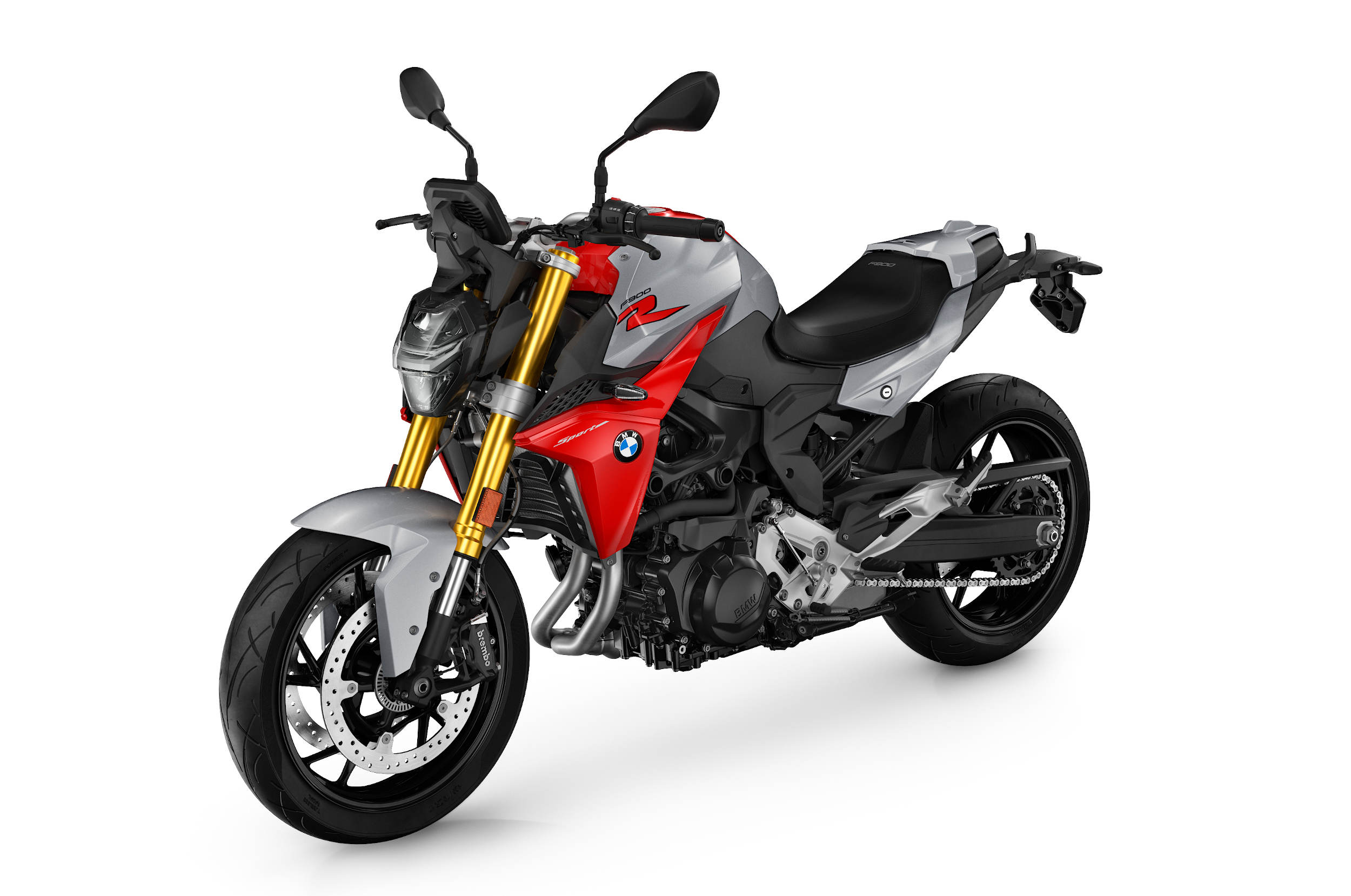
The new BMW F 900 XR – a genuine “XR” for the mid-range.
“XR” stands for an uncompromising mix of sportiness and touring capability. Having established this family with the BMW S 1000 XR, BMW Motorrad is now expanding it with the addition of a mid-range model. The design style and vehicle concept clear refer to the kinship with the “big sister”.
The F 900 XR also demonstrates easy mastery of the Adventure Sport segment’s key qualities: sporty riding dynamics combined with upright, GS‑like ergonomics, outstanding long-distance and passenger suitability and a design that conveys a powerful sense of character.
The new F 900 XR also benefits from the technology transfer from the upper class: Adaptive Cornering Light, Keyless Ride or Intelligent Emergency Call are all unique features in the mid-range.
In addition to sporty riders, the XR is also aimed at newcomers and motorcycle returnees due to its easy accessibility, low minimum seat height, A2 capability and attractive entry price.
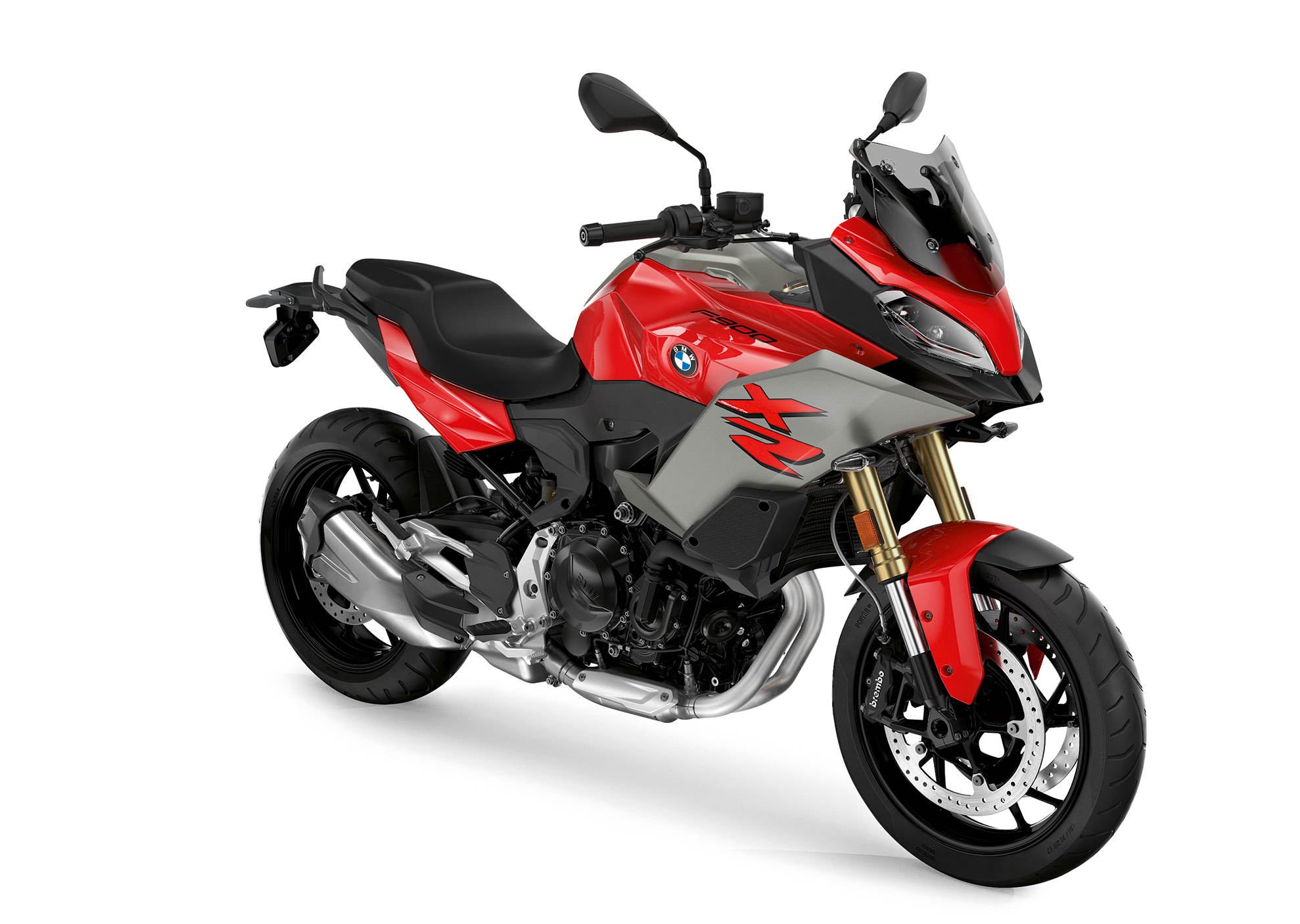
Technology benchmark in the segment.
The two new models F 900 R and F 900 XR currently set the technological benchmark in the mid-range segment with their high-quality standard equipment (Connectivity, LED all round as standard) and their wide range of optional extras – in some cases unique in this class (including Adaptive Cornering Light, Keyless Ride, Dynamic ESA, Riding Modes Pro, Shift Assistant Pro, Intelligent Emergency Call, ABS Pro, MSR, DTC, DBC, RDC).
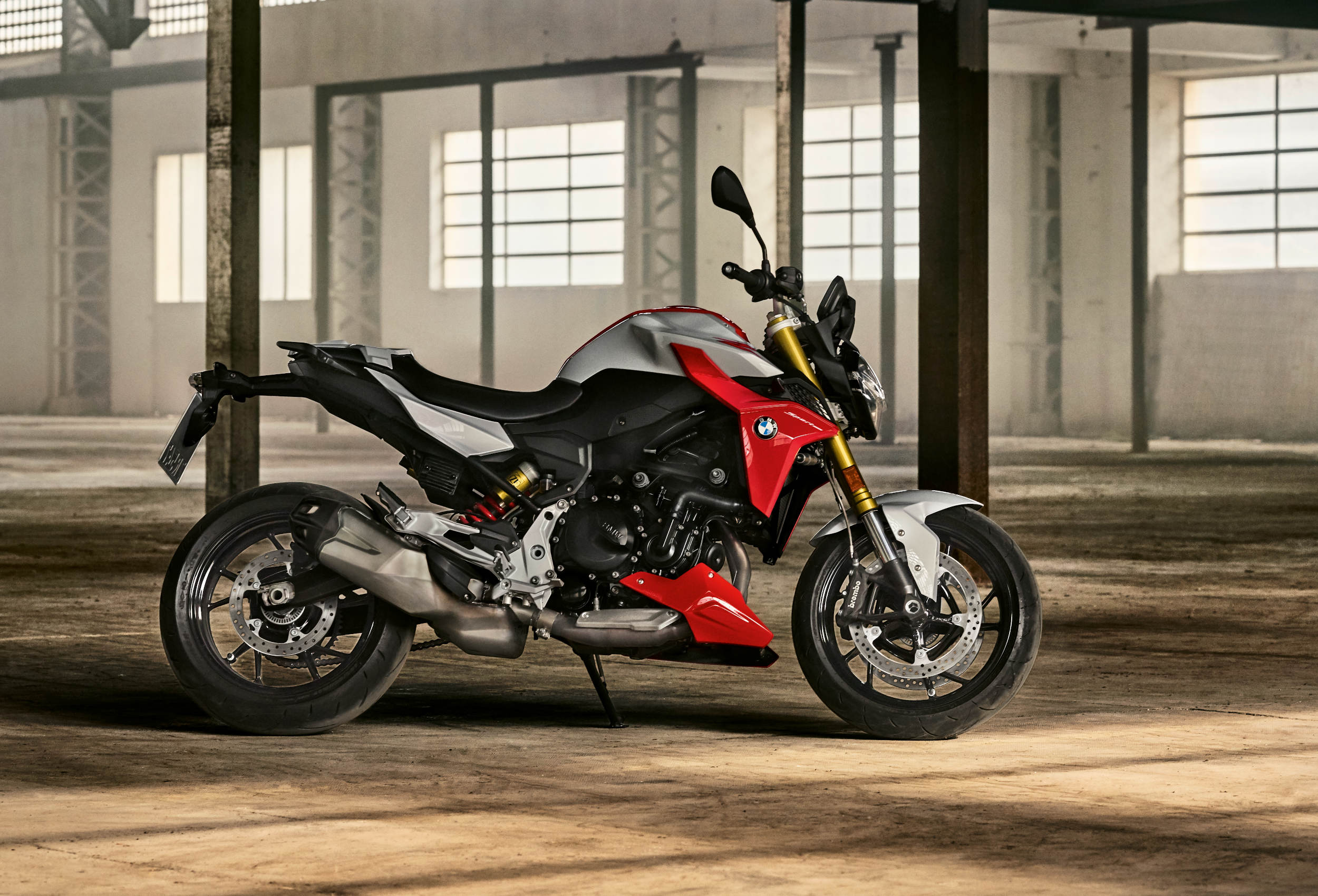
Drive featuring further developed 2-cylinder in-line engine with increased capacity and power along with new engine drag torque control.
In the new F 900 R and F 900 XR, enhanced riding dynamics are ensured by the further development of the 2-cylinder in-line engine first introduced in 2018 in the F 850 GS, now with 77 kW (105 hp) and an even fuller torque curve. The main factor here is an increase in capacity to 895 cc (previously 853 cc). With an ignition distance of 270/450 degrees and a new underfloor silencer system, the engine offers a particularly emotional sound.
In addition to the standard anti-hopping clutch, the new F 900 R and F 900 XR can be fitted with engine drag torque control (MSR) for the first time. It prevents the rear wheel from slipping as a result of abrupt throttling or downshifting, thereby ensuring even greater safety.
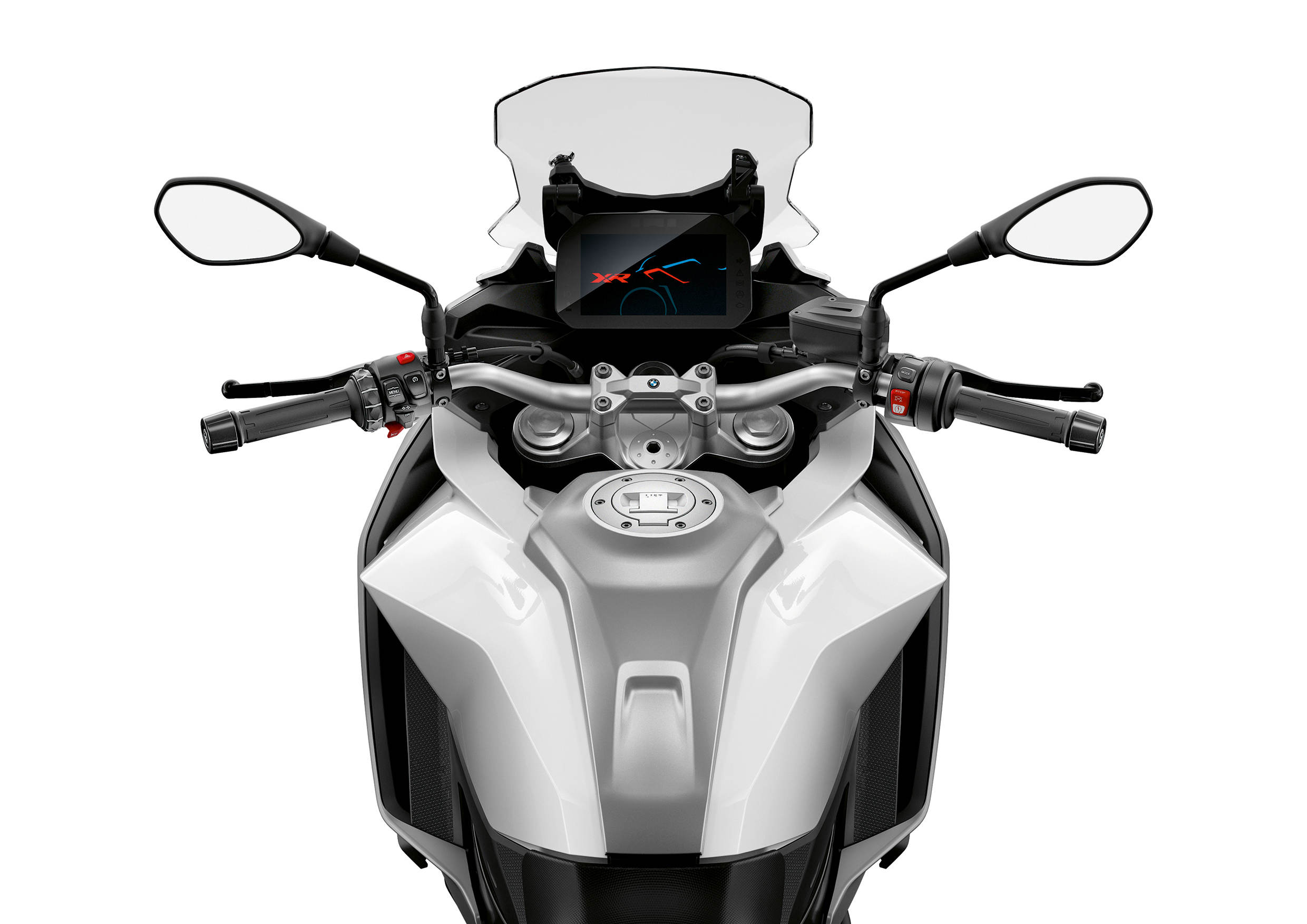
Two standard riding modes, ASC
and ABS.
Riding modes Pro with DTC, ABS Pro, DBC and MSR as ex works options.
The new F 900 R and F 900 XR already offer the “Rain” and “Road” riding modes as standard. The standard trim also includes ABS and ASC Automatic Stability Control, which is disengageable.
With “Riding Modes Pro” as an ex works option, the sporty characteristics of the new F 900 R and F 900 XR can be experienced even more intensively. The additional riding modes “Dynamic” and “Dynamic Pro”, Dynamic Traction Control DTC and banking capable ABS Pro are available, along with Dynamic Brake Control (DBC) and the new engine drag torque control (MSR).
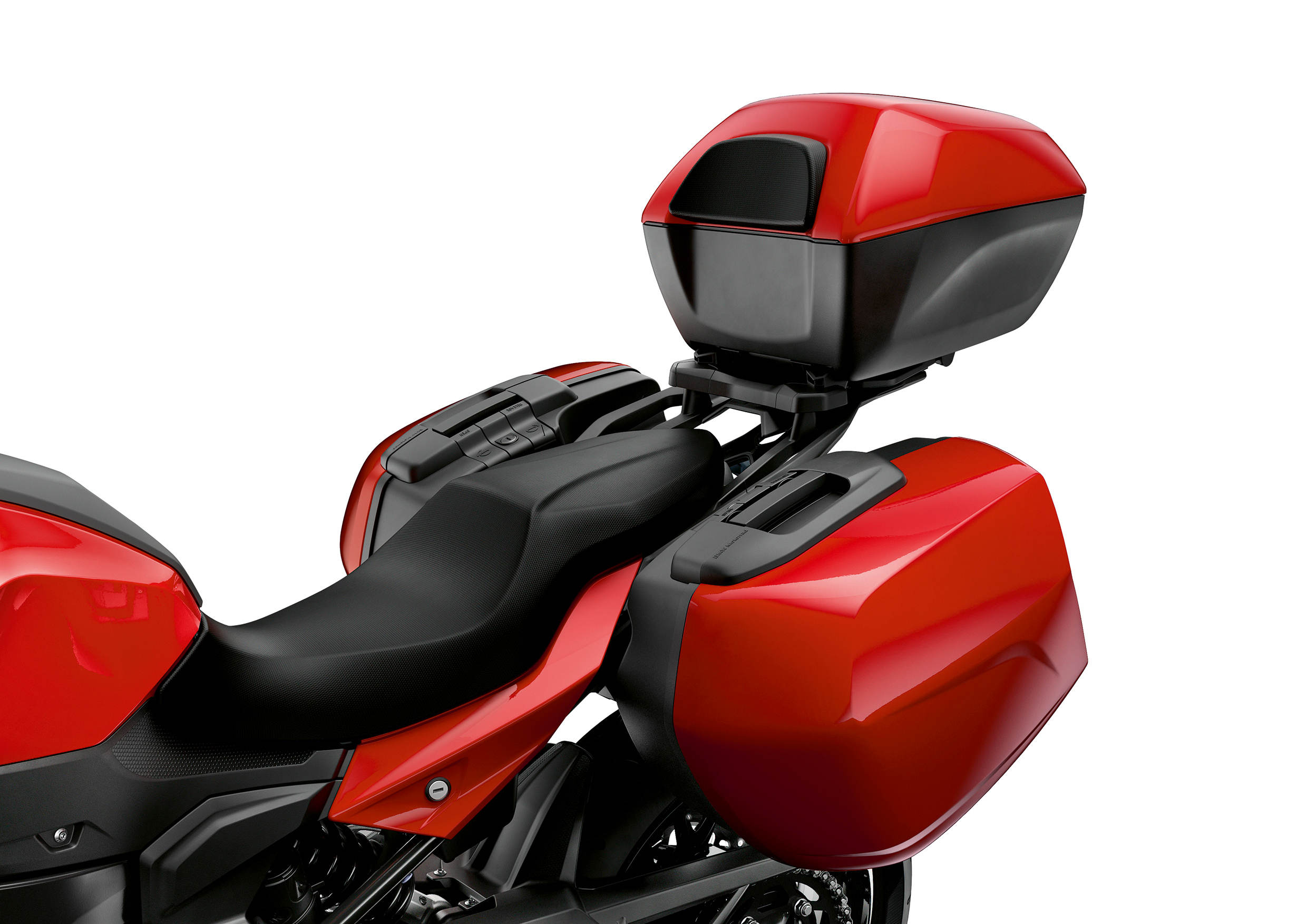
Chassis with steel bridge frame, lightweight plastic tanks and the electronic suspension Dynamic ESA as optional extras.
Like the GS models in the F Series, the new F 900 R and F 900 XR make use of a steel bridge frame that integrates the engine as a load-bearing element and a fuel tank that is now back in its classic position in front of the
rider. Front wheel control is taken care of by an upside-down telescopic fork, while the rear wheel is guided by a double-sided swinging arm with central suspension strut.
The light, plastic-welded fuel tanks
with a capacity of 15.5 litres (F 900 XR) and 13 litres (F 900 R) are a world
first in motorcycle construction. The bolt-on steel rear frame has also been
newly developed for the F 900 R and
F 900 XR in order to create a visually short and slim rear. While the new F 900 R is
a dynamic roadster focusing on sporty use and therefore shorter spring travel,
the new F 900 XR – with its somewhat longer spring travel –
offers a noticeable increase in comfort and therefore an even wider range
of potential uses.
With the BMW Motorrad Dynamic ESA (Electronic Suspension Adjustment), available as an optional extra and almost unique in these vehicle segments, it is possible to further enhance the dynamic riding experience, riding comfort and also touring and passenger suitability, since the damping of the rear spring strut is automatically adapted to the conditions depending on riding state and manoeuvres.
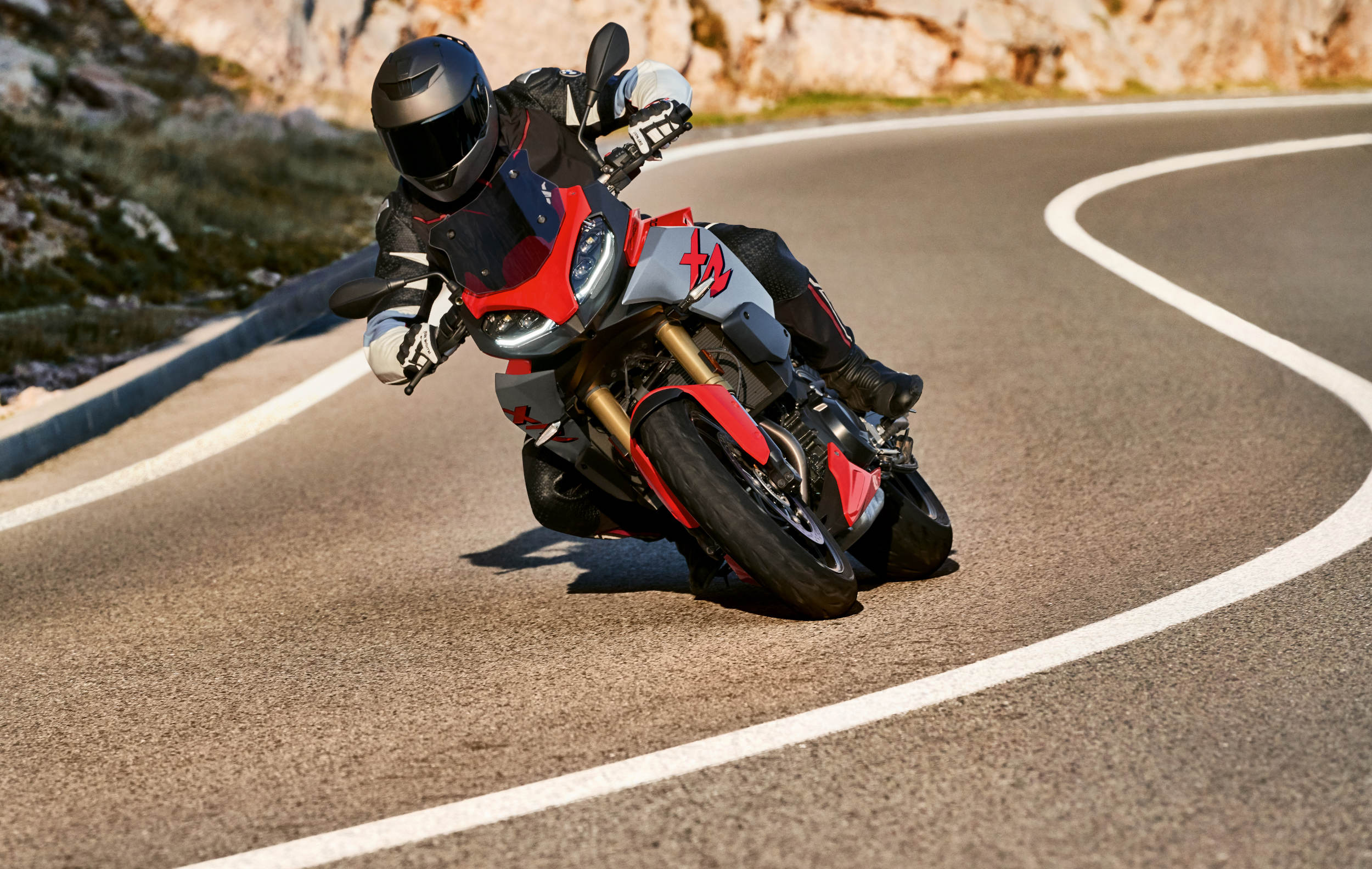
Adaptive Cornering Light
unique in the mid-range segment as part of the optional extra Headlight Pro.
Powerful LED lighting units all round as standard.
Even greater safety is offered by the Adaptive Cornering Light as a component
of Headlight Pro, which is unique in the mid-range and comes as an optional
extra ex works. Here, the rider benefits from improved illumination of the road
when cornering for even safer riding at night. All lighting units in the new
F models are based on LED technology as standard.
Perfectly readable colour
6.5-inch TFT screen with BMW Motorrad Connectivity as standard.
The BMW Motorrad developers attached great importance to optimum readability
for the instrument cluster – even in difficult lighting conditions.
In addition, information diversity, display quality and user-friendliness
are unmatched. The graphics on the screen are visually adapted to the
sporty on-road world. Additional Core screens are available in conjunction
with the optional Pro riding modes. The standard BMW Motorrad Connectivity
is a unique feature in the mid-range, offering the ability to conveniently talk
on the phone, listen to music or navigate while riding.
Perfectly designed ergonomic triangles for dynamic riding fun and – in the case of the F 900 XR – excellent segment-specific wind and weather protection for touring and travelling.
As a dynamic roadster, the F 900 R offers a particularly sporty, active seating position.
Meanwhile the F 900 XR offers an impressively active yet relaxed riding position for touring and travelling. The front fairing including an adjustable windshield combines a sporty look with sound rider protection.
Various low and high seats along with the optional lowering feature also allow individual adjustment to various body heights.
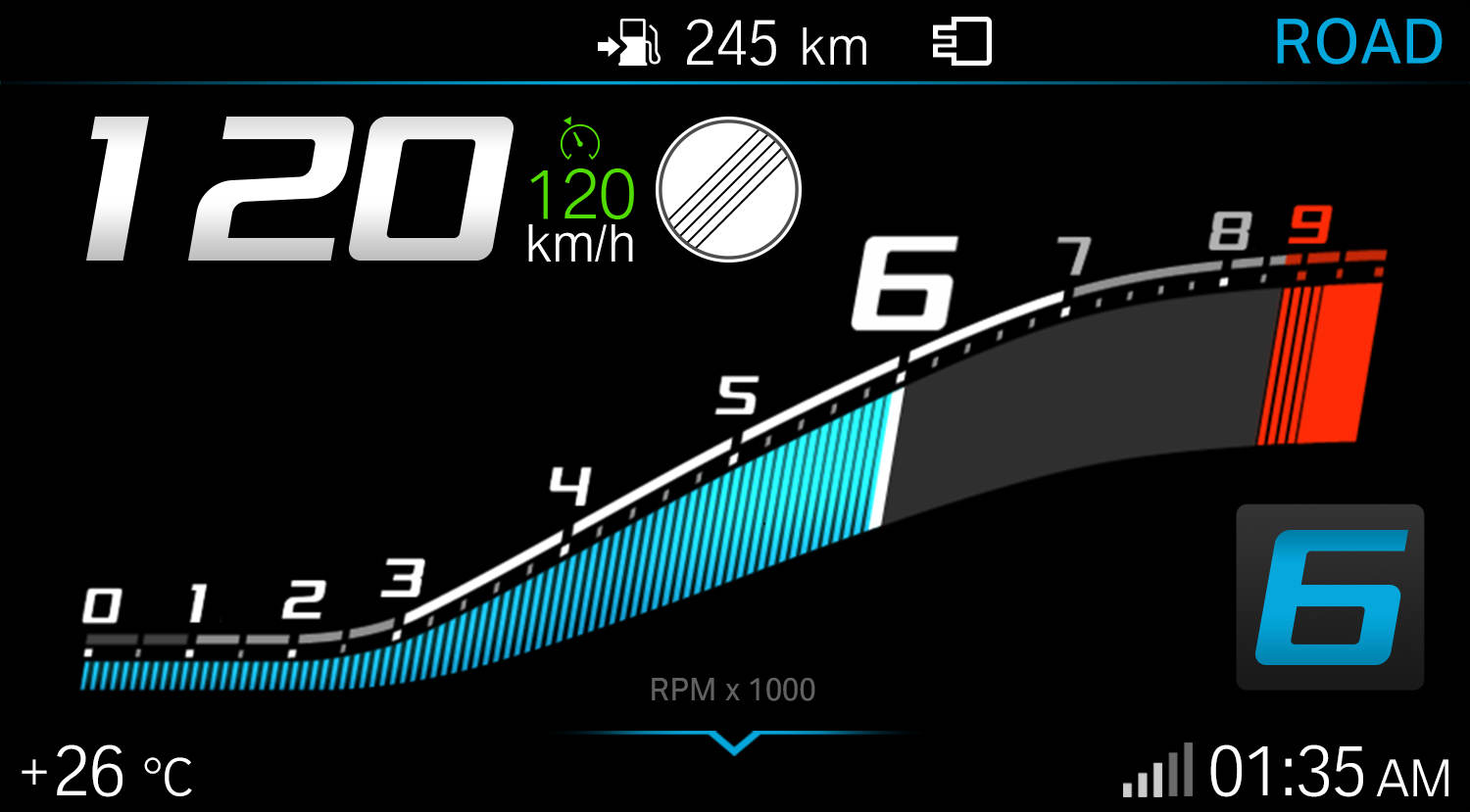
Three powerful colour and style variants each for an unmistakable sense of character.
Three dynamic colour and style variants for the new F 900 R and F 900 XR ensure unmistakable characteristics.
The new F 900 R is available in Blackstorm metallic, San Marino Blue metallic and Style Sport in Hockenheim Silver metallic/Racing Red.
In addition to Light White, the new F 900 XR offers the two Style variants Style Exclusive in Galvanic Gold metallic and Sport in Racing Red.
The highlights of the new BMW F 900 R and F 900 XR:
• The new BMW F 900 R: the dynamic roadster for purist riding fun.
• The new BMW F 900 XR: a genuine “XR” for the mid-range.
• The powerful common backbone
integrates the further developed
2-cylinder in-line engine with an increased capacity of 895 cc
(previously 853 cc).
• Further enhanced output and torque: 77 kW (105 hp) at 8 750 rpm and 92 Nm at 6 500 rpm.
• More than 87 Nm torque in the relevant lower speed range from 4 500 to 8 500 rpm.
• 35 kW (48 hp) version available for licence class A2.
• High level of running smoothness due to two opposed counterbalance shafts.
• Two riding modes “Rain” and “Road” as well as ABS and ASC as standard.
• Riding Modes Pro with two further riding modes as well as Dynamic Traction Control (DTC), ABS Pro, Dynamic Brake Control (DBC) and engine drag torque control (MSR) as ex works options.
• Steel bridge frame for optimum rigidity, robustness and riding precision.
• Newly developed slim steel rear frame.
• World first in motorcycle construction: light, plastic-welded fuel tanks with a capacity of 13 litres (F 900 R) and 15.5 litres (F 900 XR).
• Front upside-down telescopic fork and aluminium double-sided swinging arm with rear central suspension strut.
• Spring travel: 135 mm (F 900 R) and 170 mm (F 900 XR) at front, 142 mm (F 900 R) and 172 mm (F 900 XR) at rear.
• Electronic suspension adjustment Dynamic ESA at rear as an ex works option.
• ABS Pro for even greater safety when braking at an angle as an ex works option.
• Sophisticated ergonomics and numerous seat alternatives.
• Fairing with practical wind and weather protection and adjustable windshield (F 900 XR).
• Adaptive Cornering Light unique in the mid-range as part of the ex works option Headlight Pro.
• Perfectly readable colour 6.5-inch
TFT screen with BMW motorcycle connectivity as standard.
• Powerful LED lighting units all round as standard.
• Intelligent Emergency Call as an ex works option for swift assistance in emergency situations.
• Keyless Ride for convenient activation of the locking functions by remote control as an ex works option.
• F 900 R in dynamic roadster design with muscular front section, aggressive headlight graphics and short, slim rear section.
• F 900 XR in Adventure Sport look with striking contours and sporty, dynamic fairing.
• High-quality workmanship down to the last detail.
• Three powerful colour and style variants each for unmistakable roadster and adventure sport characters.
• Extensive range of optional extras and Original BMW Motorrad Accessories as well as rider equipment.
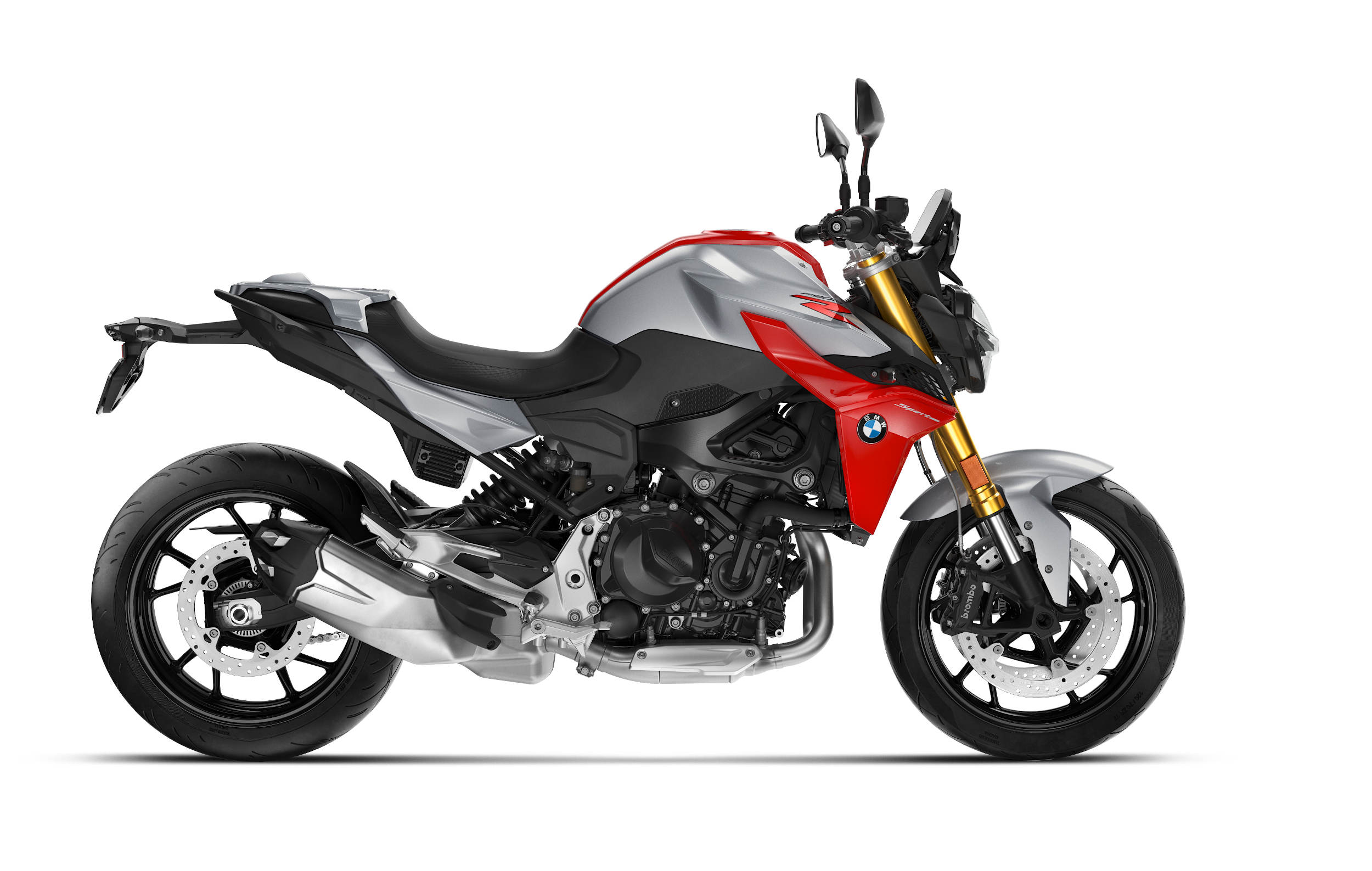
See more of MD’s great photography:






Given that the F850GS and F750GS are clocking in at over 500#’s, the F-XR and F-R are likely to be as heavy as the S-XR and R1250R, but be down 60 and 30 HP respectively.
These two new middle-weight beauties look like the perfect all-around bike. Which of the middle-weights appear to have the best reliability reputation? Does BMW top Honda, or in this era are all Japanese bikes mostly trouble-fee, and so are English, German, and Austrian bikes? (Sorry Italy)
This might be the one to get me back in the dealerships. A modern touring bike with most of the Enannies as an option. I realize the R9T is devoid of this, as are the little Duc Scramblers. I’ve been saying for years “I just NEED 100horses, hard bags,5 gallons, and under 500 lbs” This is close, maybe?
Aside from the usual fluff, I didn’t hear anything that implied better handling, lighter weight, clutchless shifting or significantly improved anything. I rode a F800GS for many years and it was a good bike but not a great bike… too heavy, too slow and too expensive compared to similar bikes of the era. I switched to a KTM 990 SMT in 2012, now there’s a under rated bike!
“I switched to a KTM 990 SMT in 2012, now there’s a under rated bike!”
Truly! I was hoping to buy one myself a few years ago, only to find KTM discontinued it for the new (huge) replacements 🙁
It seems anyone who is lucky enough to have one really love them.
Luck? Anyone without any luck at all can still buy one if they wanted.
AMEN. The last sporty/ tour/ naked. Rowdy with no nannies!
Aprilia Shiver 900 is $9,500 and gets pretty darn good reviews
That’s what hung me up was thinking in 360’ instead of 720’. Thanks!
“Affordable price point” for a BMW, I bet it starts at $15,000 on the dealer floor.
The view from the seat reminds me a lot of my Yamaha FJ-09, which seems a direct competitor to this.
Well, I love these two.
Does 270/450 degree crank mean the same as a 270 degree crank or am I missing something? Never heard of this 450 degree crank thing. My understanding was first spark always at 0 degrees and second at 270/180 or 360.
Yes, it’s the same. If cylinder two fires at 270 degrees of crank rotation, then cylinder 1 fires 180 degrees later at 450.
A 270/450 firing order implies a 270 degree offset between crank arms. Note that 270 or 90 are similar, but it depends on the direction the crank is spinning. The 450 is signifying firing impulses 180 degrees apart. This is done to prevent confusion, especially in the case of a 360 degree crank, where pistons could fire together (360/360) or 180 degrees apart (360/540).
The 270/450 signifies when each cylinder fires. Remember, these are 4 stroke machines, so you need two revolutions (720 degrees) to go through a complete 4 cycle event. So, for a 270/450 twin, the first cylinder fires, then 270 degrees later the second cylinder fires. Then, the engine goes through 450 degrees of no ignition before starting over. For a 360/360 firing order on a 4 stroke parallel twin, the pistons are going up and down in unison – this is an uncommon engine architecture – very unbalanced. And, as 360 + 540 = 900, I have no idea what you are referring to there.
Me either hahaha
Kawasaki went away from a linkage less rear on the similar Ninja 650 for good reasons….. Just saying..
I like the XR, but I think i’d take the new VStrom over it if they cost about the same. Cheaper to run, more grunt, better suspension, v twin vs p twin.
CRIKEY..! A BMW sport-touring bike(XR) without a center stand..?? hard to imagine
Center stand is an option.
“Was there an issue with the belts on the older ones?”
The main issue with the belt drive system was all the VOCAL chain drive apologists who clamored that chains and sprockets were actually superior despite the fact that they:
-are noisier
-required frequent adjustment/lubrication/cleaning
-dirtied the rear wheel and swing arm
-made removing and installing the rear wheel a pain in the butt
-required replacement by 16-20K miles
Other than that they are just great…even though Harley, Indian, and Yamaha (on their big cruisers) adopted belt drive systems eons ago. The designers of this new bike probably just got tired of hearing all the irrational complaints.
Maybe it’s because of the $600+ service to replace the belt every 24,000 miles, according to the service schedule. You can save a couple hundred bucks doing it yourself or stretch it out a few more thousand miles like some are doing. It’s this, the fuel filler in the seat and the stupid wide tires that turned me off from the F800ST/GT. I bought a 690 Duke for the commute but still have my K75S for reeeaally long rides and the R75/5 for the nights out.
“Was there an issue with the belts on the older ones?”
Yes there ‘was’: rear wheel bearing failure on early models, with the symptom of making the belt run out of true.
That headlight design on the Roadster model looks like the outside lamps on a house. Not good.
reminds me of Iron Man’s helmet lol
see it’s not only 250’s that experience engine displacement creep..250>300> 350> 400> 500. All the new models listed, including the midsize bikes are creeping up in displacement.
These have a lot of nice features. One of the features on the older models I liked was the belt drive. Notice these have gone to chain drive. Was there an issue with the belts on the older ones? Thought they were supposed to be quieter, cleaner, less maintenance and longer lasting?
Anyhow these should do well, but they are encroaching on liter bike territory instead of mid size anymore.
“Was there an issue with the belts on the older ones?”
The main issue with the belt drive system was all the VOCAL chain drive apologists who clamored that chains and sprockets were actually superior despite the fact that they:
-are noisier
-required frequent adjustment/lubrication/cleaning
-dirtied the rear wheel and swing arm
-made removing and installing the rear wheel a pain in the butt
-required replacement by 16-20K miles
Other than that they are just great…even though Harley, Indian, and Yamaha (on their big cruisers) adopted belt drive systems eons ago. The designers of this new bike probably just got tired of hearing all the irrational complaints.
The R model has been chain driven since it was first introduced, though I am surprised they didn’t keep the belt up with the XR model.
To me, the best thing about belt drives is how connected the rear wheel feels to the throttle. Seamless. Must be that little bit of elasticity in the belt.
The worst thing about belts is you just never know when they are going to give up the ghost.
Do belts fail catastrophically? I thought they were designed to start shedding teeth near the end of their life.
I don’t know what they are exactly designed to do as they approach end of life. But from my own experience, perfectly good (to the naked eye) belts just pop. There was nothing really warning of an impending failure.
“the best thing about belt drives is how connected the rear wheel feels to the throttle”
Belt drives are designed to be under tension and have no slack. Most chain drives are designed with slack to allow suspension movement. When you close the throttle then open it there is a minor delay while the sprocket takes up the slack. It is very minor but noticing it shows the level of precision we (well, some of us) use when riding.
I have always preferred chain drive due to the ease of making gearing changes and light weight. But that’s just me and it suits the type of riding I do. I would be happy to use other final drive types but all have their down sides and chains have just always fit the bill. Also, the fact is they are the most efficient method of transferring power to the rear wheel or MotoGP bikes would use something else.